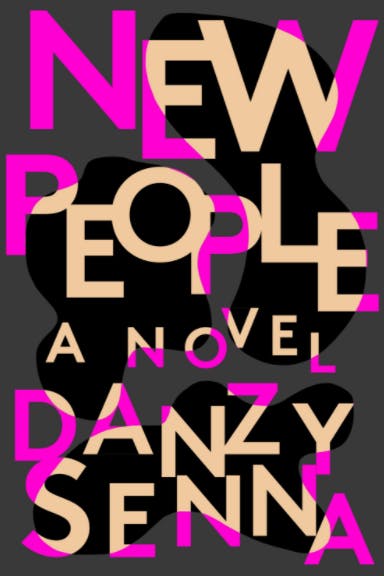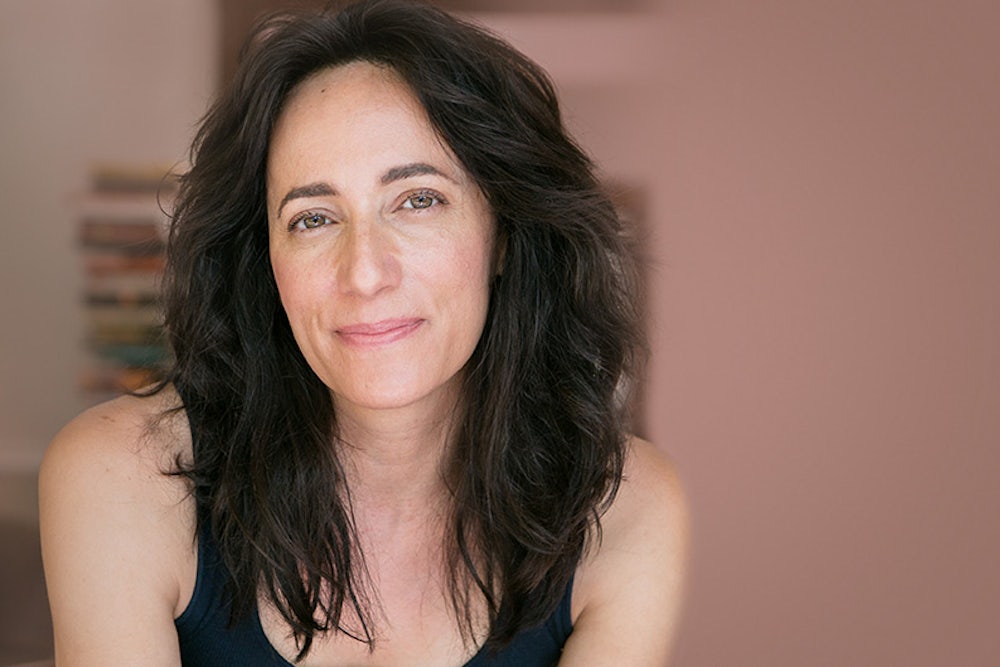It is 1996 in Brooklyn. The crime rate is on the decline, artists are fleeing Manhattan and its staggering rents for neighborhoods such as DUMBO, Williamsburg, and Greenpoint, immigrants are flocking to the borough, and you could still buy a brownstone for under $500,000. This is also the year of the Fugees’s iconic album The Score, Lil Kim’s Hardcore, Foxy Brown’s Ill Na Na, and Jay-Z’s Reasonable Doubt. The era was one of creativity, movement, and rapid innovation, making it fertile ground for the racial dynamics explored in Danzy Senna’s highly anticipated third novel, New People. In a decade when the country had witnessed the Rodney King beating, the Los Angeles Riots, and the O.J. Simpson trial, racial tension were at an all-time high. This is not the time to try and escape one’s race. But there are Black Americans whose trauma from decades of racism leads them to cultivate themselves into a world of the light-skinned elite, and a world where they hope they will be safer, more compatible with the American Dream.
This is the world in which we meet Maria Pierce and Khalil Mirsky, two light-skinned, mixed race black people who want it all and are on track to get it: a Brooklyn brownstone, a wedding at a lighthouse in Martha’s Vineyard with nouveau soul food, a dog named Thurgood, and two children “with skin the color of burnished leather” and “hair the color of spun gold” named Indigo and Cheo. Maria and Khalil met at Stanford, where they fell in love over conversations about interracial dating and misogyny in hip-hop, Giovanni’s Room and Cosby episodes, chicken and waffles. Now, Khalil, a part-time technology consultant, is about to take advantage of the dot-com boom by creating an online community of “modern tribalism” with his friend, while Maria spends her days finishing up her dissertation on the Jonestown Massacre. It’s perfect. Until it isn’t.

The novel opens with Maria being entranced by a dark-skinned, unable-to-racially-pass poet at a reading. You might think that this spellbinding moment is the genesis of an affair. Instead, we realize that Maria is watching this performance with Khalil and her future sister-in-law, Lisa. The undercurrent of this story is not about Maria’s identity as a wife, but rather about coming to terms with her racial identity and all the trauma she harbors around it. Maria believes her blackness can be reinforced through TV shows, hairstyles, music, and food—she doesn’t seem to grasp that blackness can exist beyond these things. Her obsession with quantifying and defining her own blackness leads down to an emotional spiral. In an odd scene, a trip to a Scientology church puts Maria face to face with an interrogater, who asks, “Can you remember a time when you were really real?” She breaks down.
No matter how many Different World episodes she watches or how many times she perms her hair to look like Whitney Houston’s, Maria is never at peace. Her mother believes that this is just the inevitably plight of a light-skinned person, and she’s not entirely off-base. With Khalil, her life will be safe and comfortable, but easy. Their trajectories are too privileged, too set in stone. All she has to do is put one foot in front of the other and together, she and Khalil will enter into a polite happily ever after, with a New York Times wedding feature to boot. But she’s floundering. She cannot finish her research on the Jonestown Massacre, which seems like a symbol of Maria’s internal darkness. At least 75 percent of the Peoples Temple members were black, while the core leadership of the cult was white. Its “messiah,” a white man named Jim Jones, incited his followers to commit “revolutionary suicide” and the primary victims were black women. But originally, the Peoples Temple, which was founded in 1955, had been a radical project influenced by Marxism and the utopian ideals of the New Left. The black women who died in Jonestown were people who had wanted to work toward a better world, but ultimately yielded to the deadly force of white authority. It was, in a sense, a failed experiment of a mixed race utopia. And herein are echoes of Maria’s conundrum: How can she really be liberated if the foundation of her relationship with Khalil is based off of their light skin? This fascination is reinforced when they are approached to be a part of a documentary, New People, about people who blur racial boundaries in order to usher in a new era, a new race. Khalil and Maria are going to be the focus of the narrative even though their story—of passing, of racial ambivalence, of conflicted identity—isn’t new.
There is a long history of light-skinned African-Americans forming exclusive communities among themselves. Throughout the 20th century, if you were darker than a brown paper bag, you could not access certain social clubs, sororities, fraternities, or churches. In 1790, the light-skinned free black men of Charleston, South Carolina created the Brown Fellowship Society, a funeral organization for black men that acquired proper burial grounds, supported widows, and educated surviving children. Besides light-skinned or “brown” men, only dark-skinned men with naturally straight hair were allowed to join. Perhaps as retaliation, darker-skinned men led by Thomas Smalls created The Society of Free Blacks of Dark Complexion in 1843. It wasn’t until after the Civil War that the Brown Fellowship Society expanded to women and those of darker complexion irrespective of hair texture and changed its name to the Century Fellowship Society. There was also the Bon Ton Society of Washington, D.C,. and the Blue Vein Society of Nashville; you had to be light enough for someone to see the spidery veins on your wrist in order to join the latter group.
As the daughter of the Afro-Mexican poet Carl Senna and the half-Irish, half-English writer Fanny Howe, Danzy Senna has never shied away from race in her works. Her first novel, Caucasia (1998), which explores racial passing, gave her literary fame and became a national bestseller, winning the American Library Association’s Alex Award. Her other works—the novel Symptomatic, an autobiographical book called Where Did You Sleep Last Night?, and a short story collection titled You Are Free—deal with similar themes around mixed heritage, lineage, and identity. In a 2011 NPR interview, Senna says that although she is mixed race, she was raised to identify as black. When the interviewer asks Senna “What are you?” she responds, “I’m interested in kind of deconstructing the question itself and asking the person who wants to know, ‘Why do you need to know? And why is it uncomfortable for you that you don’t know?’ And, you know, I’m less interested even in that than I am in writing about ambiguity and power and economics, and looking at the history of these terms.”
In New People, the brown-skinned poet holds an interesting position, both within the prose and Maria’s interiority. He doesn’t have many lines, and Senna is very conservative when it comes to describing him—he doesn’t even have a name. Sometimes, it’s hard to suss out if this poet is a real person, or a projection of Maria’s desire to heal her clashing views of blackness by achieving intimacy with someone darker than she. Maria seems to yearn for a bond, a connection to another black person on the other side of the color spectrum. This might be why Maria is obsessed with the poet from the moment she lays eyes on him, breaking and entering into his apartment and holding onto one of his hats so he can only retrieve it by meeting up with her for a drink. Khalil is still her partner, but when he reappears in the story, he arrives alongside some responsibility or chore: wedding dress fittings at Bergdorf Goodman’s, wanderings at Crate & Barrel, New People documentary shootings. Between the sex on their apartment floor and their Waldorf salads, it is very easy to pick up the banality between them. He is moving forward with their life while Maria is pulling back from it, despite the black women around her telling her that Khalil is a good man and it doesn’t get any better than this. The poet, on the other hand, unearths her impulsiveness—he brings out her need to expand, to exist beyond the comfort of her privilege.
The release of New People six months after Donald Trump became president might be fortuitous. Although the conversation surrounding identity politics has become a much belabored point, still, to consider the alliances and nuances within race remains relevant. It is not enough to argue that political alliances happen among and between women, black people, Latinos, immigrants, and LGBT people. Within communities and individual lives, the realities are more complicated: privileges and oppressions compound and collide. Are you rich? Are you poor? Are you light-skinned? Are you dark-skinned? Are you educated? Are you not? These questions shed light on the divisions within the aforementioned groups; they broaden and complicate our ideas of solidarity.
Still, as a novel, New People is not without its flaws. The story seems rushed, with dialogue that reads as too premature or out-of-place to be realistic. The ending may throw readers for a loop with its ambiguity, even if the open-endedness is compellingly provocative. But the question of “Can you remember a time when you were really real?” reverberates on each page. Are any of these characters really real? Could they exist beyond the confines of their own knowledge of what it means to be black, or would they be destroyed by such a potentiality? What this novel succeeds in is creating a dense psychological portrait of a black woman nearing the close of the 20th century: inquisitive, obsessive, imaginative, alive. She is as puzzling as she is alluring, even if one may finish the novel feeling as though the issues are unresolved. Maybe that’s just how it is to live a life that transcends what’s written on the page.
